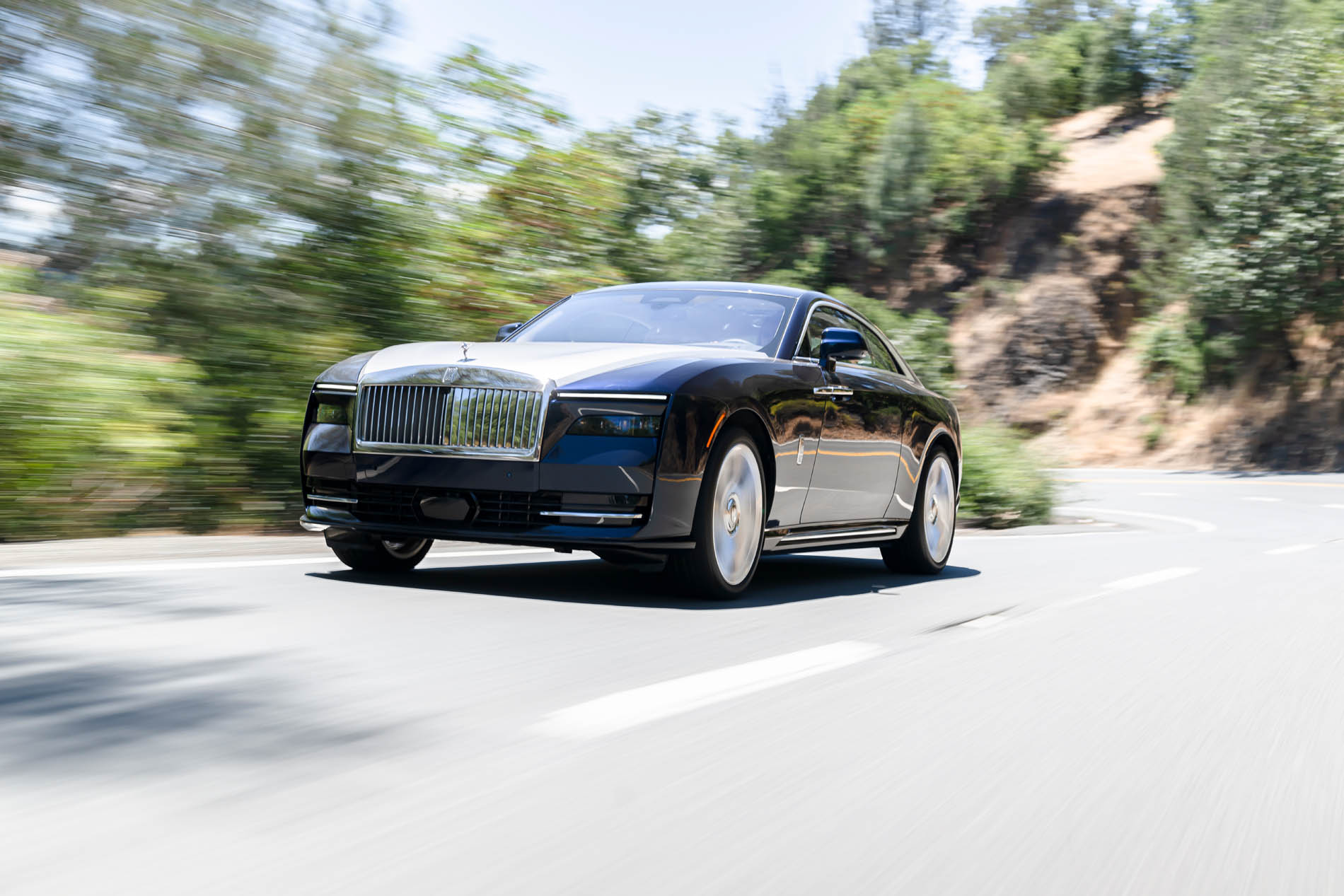
At some point in the creation of the new Rolls-Royce Spectre, the company’s first-ever all-electric car, a difficult meeting must have taken place. ‘Chaps, the car’s feeling great, but there’s one thing — it’s too fast,’ someone in product testing must have told the engineering team. ‘Can you make it slower?’
‘Slower?’ the incredulous reply from the engineering team presumably came. ‘You want it to be… slower?’
‘Yes, indeed. It’s a great engineering accomplishment, but I’m afraid it made Derek spill his Champagne.’
Now, although some details of this exchange are — ahem — artistic re-creations, Rolls-Royce genuinely does use the Champagne test as its benchmark for a smooth ride: if the car surges and jerks violently enough for a passenger to spill their fizz, then it’s back to the drawing board. The everything-all-at-once nature of an electric motor’s power delivery made this a challenge, as you’re not awakening a mighty beast so much as startling a kitten by popping a balloon. That sort of thing might be fine for vehicles with cats and horses on their badges, but it won’t do for a motorcar with a flying lady on the bonnet. It simply isn’t Rolls-Royce-y enough.
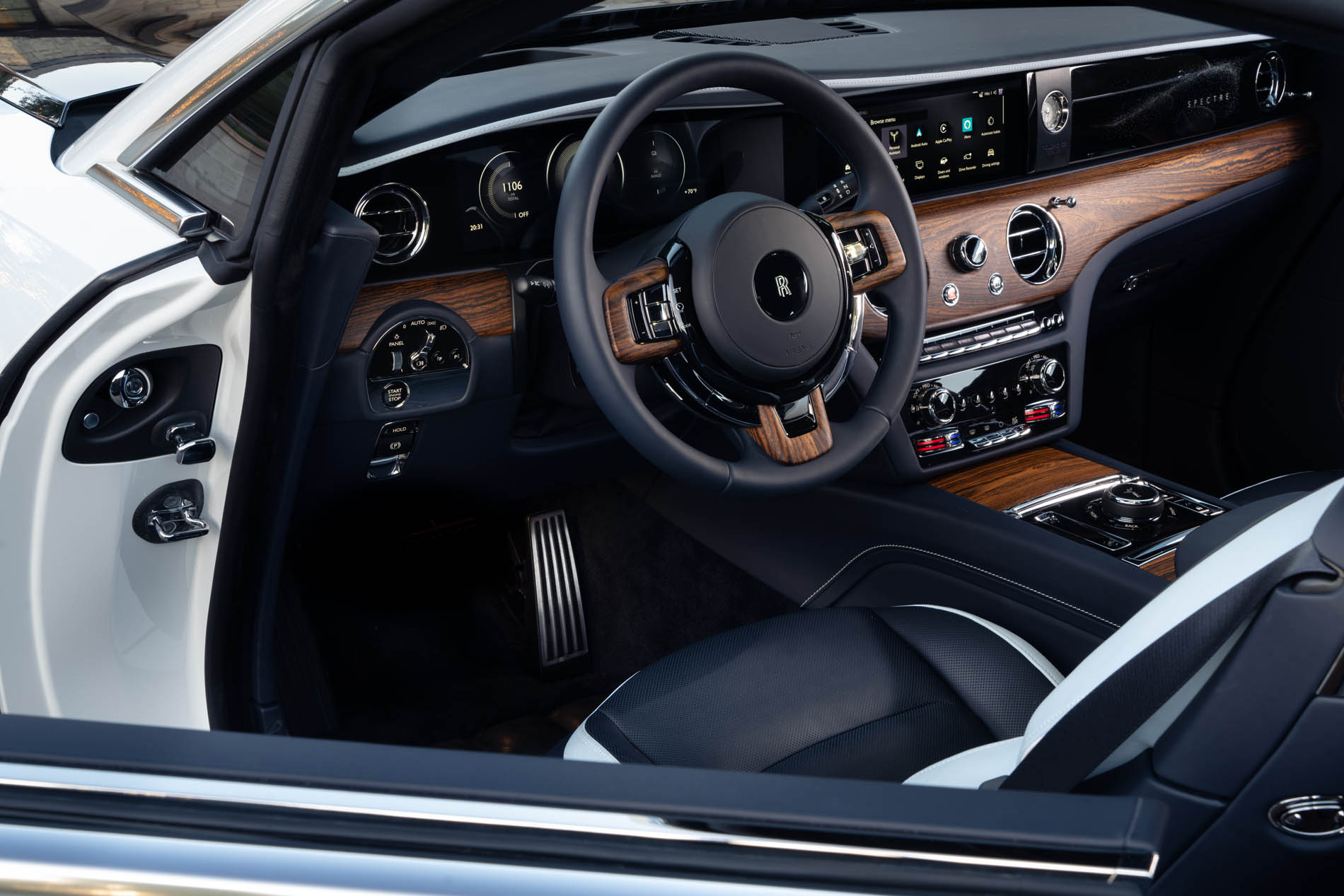
The solution was a tiny artificial delay being introduced between pedal and response, akin to bringing the lights on with a dimmer instead of an on-off switch, to retain the famed ‘waftability’ for which the company strives — and to pass that all-important Champagne test.
It has no doubt sacrificed a 10th or two from the 0–60mph time, but getting to 60mph in 4.4 seconds as you sip 1990 Dom Perignon in comfort trumps doing it in 4.2 seconds and spilling Champers on a Savile Row suit. It also ensures the Spectre feels absolutely, unequivocally like a Rolls-Royce — and that’s exactly how the company wants it: a vehicle that is a Rolls-Royce first and an electric car second.

It’s hard not to agree that the team has pulled it off. This is arguably the best-looking car Rolls-Royce has made in a generation (it’s demonstrably the most aero-dynamic) and the interiors are as exquisitely plush, comfortable and entirely customisable, as you’d expect of any car coming out of the Goodwood factory in West Sussex.
Exquisite houses, the beauty of Nature, and how to get the most from your life, straight to your inbox.
It’s not only colours and trim, but everything from the shade of the instrument dials to the wood used in the veneer and whether or not you have a Champagne fridge installed in the back (always back to the bubbles). You can even specify the constellations to be reproduced in the car’s iconic ‘starlight ceiling’, which features almost 5,000 fibre-optic stars hand-stitched into the headlining.
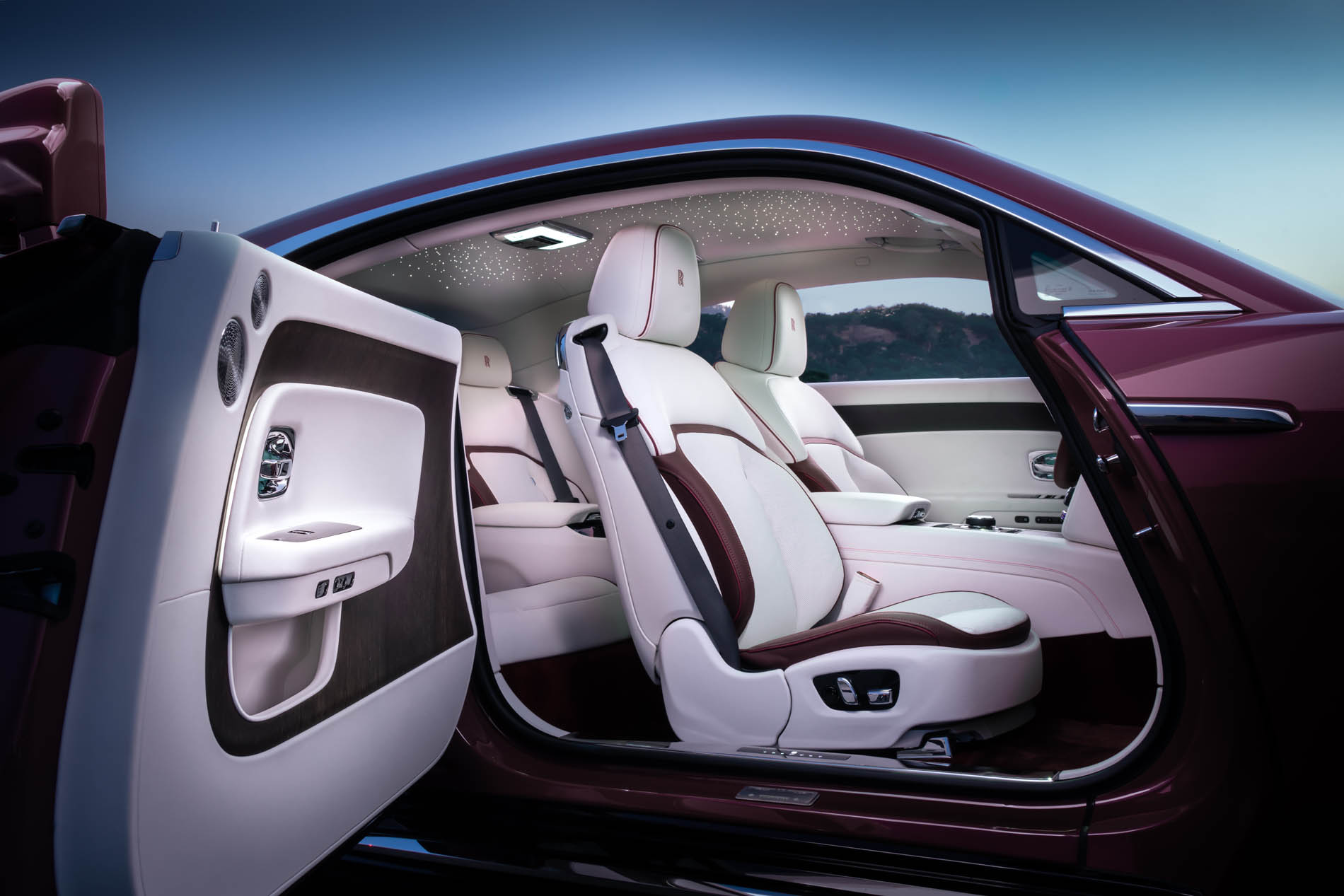
On the road, it is powerful, effortless and floaty, with the company’s ‘magic-carpet’ ride present and correct, exactly as Rolls owners would expect. Push the Spectre hard, however, and a surprise awaits, as a dazzlingly clever combination of four-wheel drive, four-wheel steering, adaptive shock absorbers and anti-roll bars respond to some 141,200 variables (each with its own controller) to tweak the ride and handling on the fly, turning what could have felt like a road-going barge into a ferociously stable, blisteringly quick coupé.
That’s some engineering achievement for a car that weighs 2.9 tons. The Spectre is actually so heavy that, if you put four rugby players in the cabin and their luggage in the boot, you’d probably hit the 3.5-ton weight threshold that would, technically speaking, require the driver to hold a Heavy Goods Vehicle licence. Yet you can drive this thing with one finger on the wheel and — thanks to clever regenerative braking technology — with a single pedal.
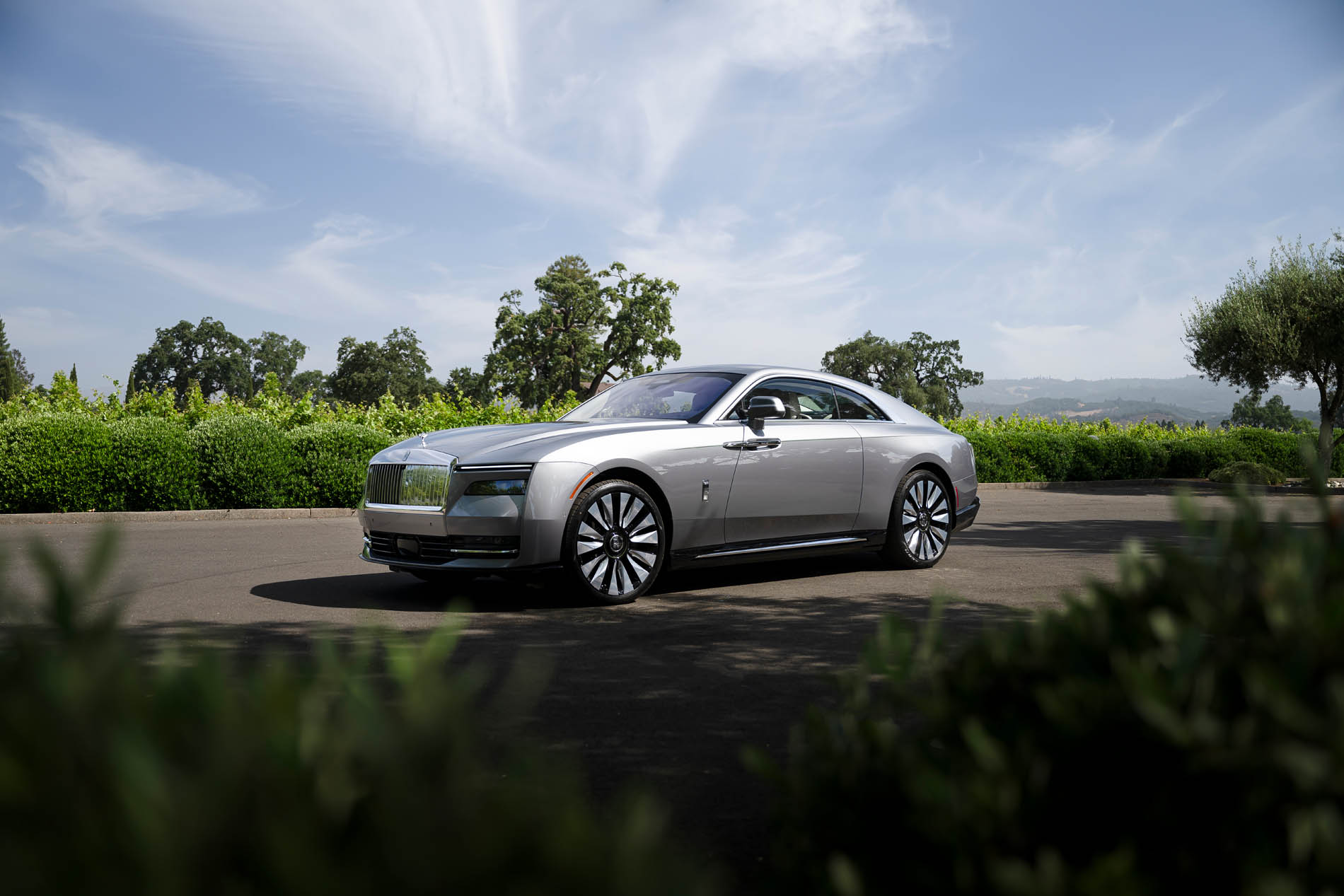
In hindsight, the marque was always going to get this right. For decades, Ferraris, Jaguars and Lamborghinis have been embracing engine noise as a visceral part of the appeal — whereas Rolls-Royce has been deploying every trick you could think of to make its cars as quiet and smooth as possible, something that (to the irritation of petrol heads) electric motors do naturally.
Co-founder Charles Rolls realised as much back in 1900, praising the first electric cars for being ‘perfectly noiseless and clean’ with ‘no smell or vibration’. All that was lacking, he noted, was the availability of charging facilities; ironically, that’s still a challenge for anyone running an EV, but Rolls-Royce owners will invariably have space for a wall charger as well as alternative, non-electric options, should they feel the need for a cross-Continental road trip.

The car is already a success. So many Spectres have been pre-ordered that anyone putting their name down now will be waiting until 2025, which seems staggering for what is — let’s face it — a colossally expensive car being launched at a time of great economic uncertainty. Those numbers mean that the Spectre is effectively review-proof… but still, it’s nice for purchasers to know that the car they’ll eventually be getting is everything they’re hoping it will be.
Rolls-Royce Spectre: On The Road
Power: Equivalent to 584bhp, 900Nm torque
0–60mph: 4.4 seconds
Top speed: 155mph (limited)
Electric range: 329 miles (WLTP)
Charging speed: 10%–80% in 34 minutes on a 195kW charger
Price: from £330,000

Credit: Dominic Fraser / Aston Martin
Aston Martin DBX review: The 4x4 of choice for car nuts, families and international super-spies
The Aston Martin DBX promises to be the car that is all things to all people: space, speed and style
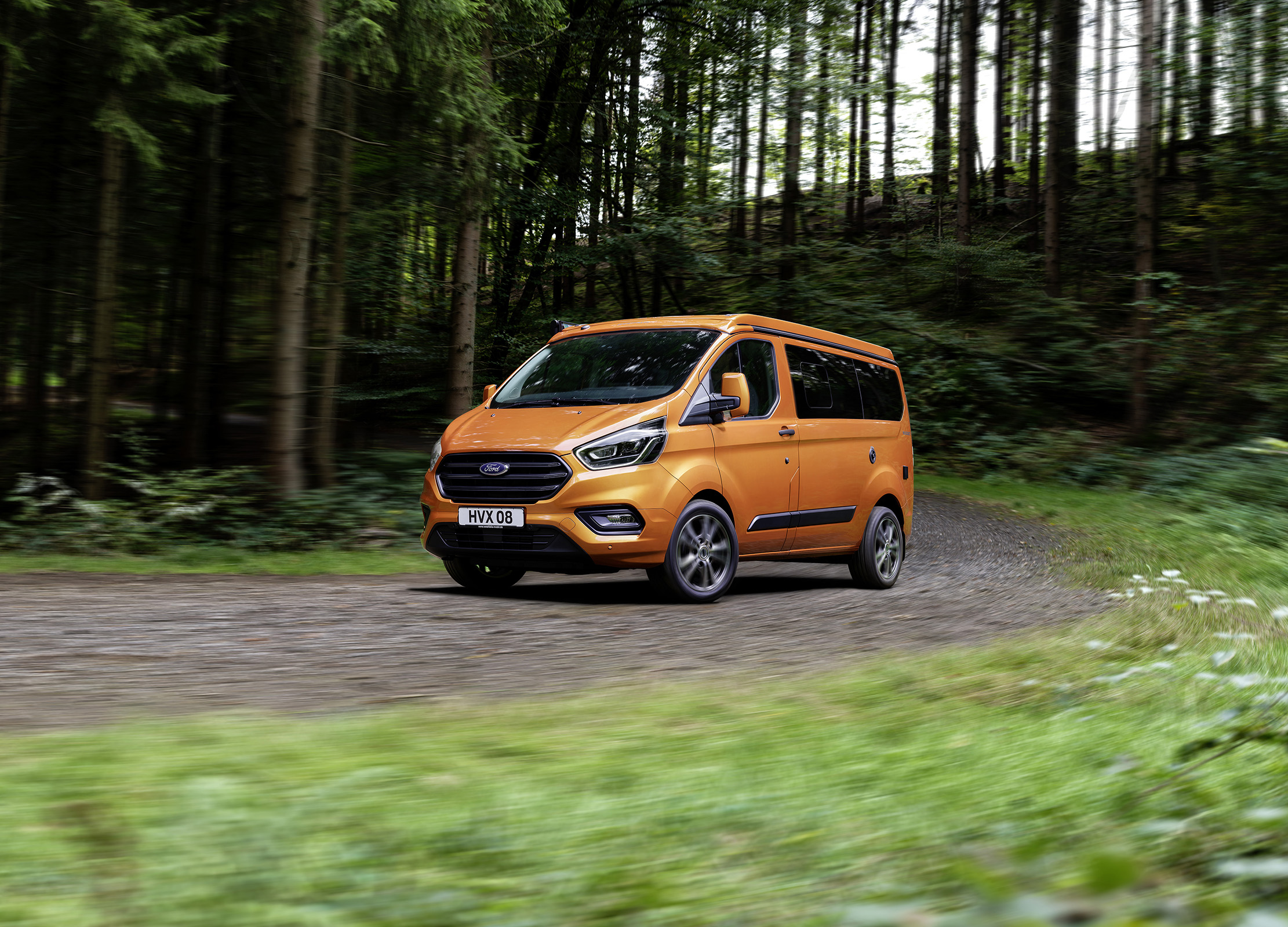
A Great British holiday on wheels? What it's like spending four days in a Ford Nugget campervan
The boom in British holidays has brought a boom in the number of people getting campervans such as the Ford

Credit: Toyota
Toyota RAV4 review: The 4x4 that dreamed of being a GTI, all grown up and 25 years old
Toyota's latest incarnation of the RAV4 is almost unrecognisable from the original car — but all the better for that, says

Credit: BMW
BMW 4-series review: An executive lounge on wheels that hits 60mph in seven seconds with room for the golf clubs
James Fisher beats the lockdown blues as he reviews the new BMW 4-series in Suffolk.
Toby Keel is Country Life's Digital Director, and has been running the website and social media channels since 2016. A former sports journalist, he writes about property, cars, lifestyle, travel, nature.

